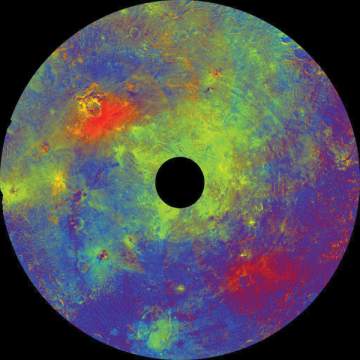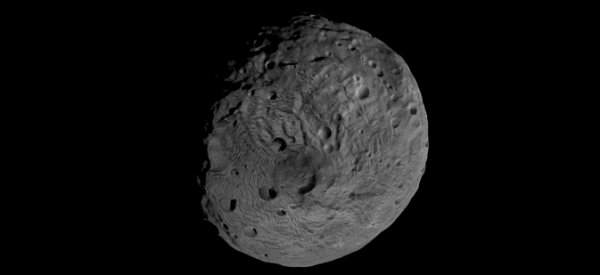Since last July, NASA’s Dawn spacecraft has been orbiting the asteroid Vesta and transmitting gigabytes of images and other relevant data.
Interestingly enough, Dawn has confirmed that Vesta is one of the most colorful objects in the solar system we have visited thus far. Indeed, the asteroid is apparently covered with “a lot” of regolith, or loose surface material, which affects the colors seen by the human eye.

As Vishnu Reddy of the Max Planck Institute notes, the term “colorful” is obviously relative in an asteroid belt where almost everything is a dull gray.
However, Dawn’s framing camera uses filters to detect the differences between one rock formation and another – resulting in bright Technicolor-like images. The naked-eye impression of color variation, if one were to visit Vesta, would be far more subtle, says Reddy.
Unsurprisingly, the unique characteristics of Vesta, which is approximately the length of Arizona, extend well beyond shape and color. For example, unlike most asteroids, it rotates on its axis. Vesta also has an iron core, as revealed by gravitational analysis. In addition, the asteroid’s gravity, though weak, is not consistent with a homogeneous material throughout. In fact, Vesta’s structure resembles Earth’s, comprising a core, mantle and crust.
“We have found a wide variety of surface features on Vesta: dark and bright ray craters, extensive systems of grooves and troughs, scarps, slumps, partially degraded impact craters that have been modified by mass movements, and even possible evidence of impact melts,” explains David Williams of Arizona State University.
“Ray craters are impact craters with dark or bright lines radiating from them, which are probably reflections from loose material ejected from the craters. The quantity and scale of many of these features surprised the researchers.”
One such feature has been dubbed the Rheasilvia formation, a 23-kilometer-tall formation in the south polar region dominated by an impressive impact crater about 460 kilometers across. The impact that formed Rheasilvia may have produced some of the meteorites found on Earth. To be sure, Dawn’s Visible and Infrared Mapping Spectrometer firmly confirms the link between Vesta and three classes of meteorite found on Earth – the HED (howardite-eucrite-diogenite) meteorites.

“This increases our confidence in using laboratory studies of those meteorites to further understand the formation and evolution of Vesta,” Reddy adds.
Other than Rheasilvia, the southern region is relatively crater-free, whereas the northern part of the asteroid is heavily cratered. Vesta’s equatorial region is moderately cratered. Many of Vesta’s impact craters seem to have been disturbed by deposits of mass movement downslope.
The widespread, very steep slopes across Vesta, combined with the extensive regolith of loose material from impact cratering, make Vesta’s surface very conducive to flow by gravity-driven mass movements.
Dawn’s observations indicate that Vesta is likely a transitional body between small asteroids and larger planets. The asteroid is estimated to have formed about 4.5 billion years ago, soon after the formation of the solar system.






